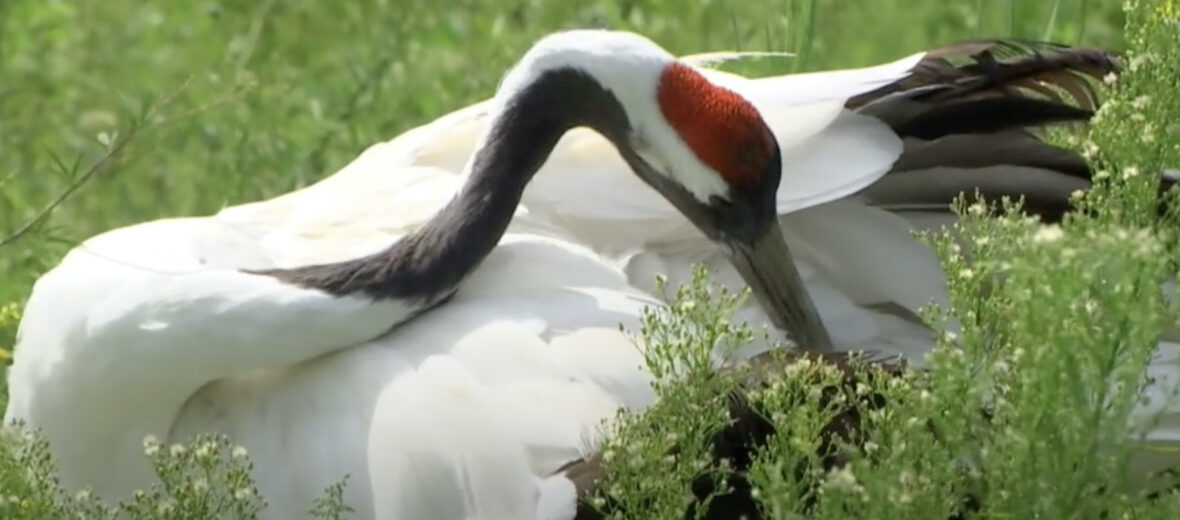
Found in northeast China, southeastern Russia, Mongolia, and eastern Japan, the red-crowned crane is 1 of the world’s largest crane species. They forage in pasturelands and winter in rivers, coastal salt marshes, freshwater marshes, rice paddies, and cultivated fields. There are 2 main breeding populations; 1 is migratory and the other is stationary. Due to illegal take & poisoning, water diversions (like dams), human disturbance, habitat destruction, and climate change, these birds are listed as Endangered by the IUCN and their populations are decreasing.
First the Stats…
Scientific name: Grus japonensis
Weight: Up to 19 lbs.
Length: Up to 5.2 feet
Wingspan: Up to 8 feet
Lifespan: Up to 15+ years
Now on to the Facts!
1.) These cranes eat fish, insects, aquatic invertebrates, amphibians, small mammals, grasses, reeds, heath berries, corn, cereal grains, and waste grain.
2.) Red-crowned cranes use high-pitched, penetrating calls with a loud, rattling kar-r-r-o-o-o at multiple variations to communicate.
3.) When they preen themselves, they will rub a special oil on their feathers that they secrete from a special gland located at the top of their tail. This helps to keep their feathers in good condition.
4.) When communicating aggression the males will inflate the red cap on the top of their head.
5.) In the Orient, this bird is a symbol of fidelity, love, and longevity.
But wait, there’s more on the red-crowned crane!
6.) These cranes are monogamous (mate for life) and will stay together till 1 of the 2 dies, then they will find an alternate mate.
7.) Courtship includes a series of bows, leaps, head bobbing, and a variety of other gestures. There is also a type of unison call produced by the male and female before they begin their other dances.
Did you know…?
There are only approximately 3,050 breeding individuals remaining in the wild today.
8.) Females lay up to 2 eggs that incubate for about 34 days.
9.) Both the male and female participate in building the nest.
10.) This species of crane is communal and they live in large flocks of up to 80 individuals.
Now a Short Red-Crowned Crane Video!
Also, check out the Critter Science YouTube channel. Videos added frequently!
Want to suggest a critter for me to write about? Let me know here.



